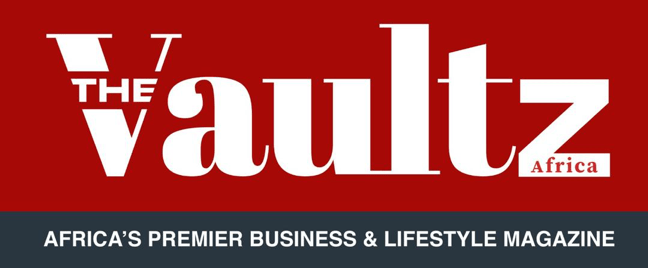
Momentum in the global economy firmed up in the final quarter of last year amid broad-based gains in developed economies and emerging markets. Global GDP grew 2.7% year-on-year in Q4, above Q3’s 2.5% increase and marked the
fastest growth in a year. A weak yen and an improving global backdrop supported a notable pick-up in Japan’s economy, while private consumption in the United States benefited from a healthy labor market. Meanwhile, China’s economy accelerated on the back of strong manufacturing activity, and rising commodities prices supported gains in a number of emerging economies. Overall, the global economy grew 2.6% in 2016, down from 2015’s 3.0%.
Available data for Q1 2017 suggest that faster global growth could be here to stay. Strong economic figures have emerged from the U.S. and the Eurozone despite an uncertain geopolitical backdrop. Analysts see growth picking up to 2.8% in Q1, and continuing on an upward trend throughout the year. After a rough 2016 for many emerging market economies, Brazil is expected to return to growth in the second quarter supported by less-tight monetary policy and a better investment climate, while Russia’s recovery is seen picking up steam this year. Moreover, stronger performances from key economies bode well for global trade flows, which are seen picking up after a dismal 2016. The recovery in global trade is however subject to one of the biggest risks to global growth: a rise in protectionism.
A rise in protectionist policies threatens to ripple throughout the global economy and could derail the momentum it is gaining. In the world’s largest economy, a border adjustment tax (BAT) is being hotly debated within the Republican Party. The BAT would tax all imports into the U.S. but exclude exports with the aim of generating enough revenue to give fiscal space for a large corporate tax cut. The plan has been criticized by analysts and would likely negatively impact key trading partners such as China and Germany, which could implement retaliatory measures. While it is still unclear if the measure will actually become policy, President Donald Trump’s protectionist stance, along with disregard for international organizations, such as the WTO, risks disrupting the current rebound in global trade flows and in an extreme scenario this could spark a global trade war.
Outside of trade, risks to the global economy linger from economic imbalances—particularly in emerging economies—and higher inflation. The era of accommodative monetary policies in developed economies is likely coming to an end, as inflation accelerates on the back of higher commodity prices. Cheap money has buttressed business and consumer confidence, and it remains to be seen if economic momentum is strong enough to withstand a higher interest rate environment and reduced tailwinds to household consumption. In addition, a dense political calendar in the Eurozone is adding to the uncertain global environment as countries worth over half the bloc’s GDP head to the polls in a context of rising populism.
Prices, protectionism and politics threaten global outlook
Analysts left the 2017 global growth outlook unchanged this month as they wait to see how global developments over prices, protectionism and politics play-out. Following a 2.6% increase in 2016, analysts surveyed expect that global economic growth will accelerate to 2.9% in 2017. The acceleration should be supported by both the emerging and developed economies. For 2018, the panel sees growth strengthening further to 3.0%.
The World’s Economy in 3600
Taking a closer look at individual countries, this month’s (March) global outlook for 2017 showed an upward revision to growth prospects for major economies such as the Eurozone and the United Kingdom. The GDP growth forecasts were held stable for major players Japan and the U.S.
Among the major emerging economies, the economic outlooks for Brazil, China, India and Russia were all held stable. At a regional level, growth prospects for Eastern Europe and the Middle Eastb and North Africa deteriorated from last month’s Consensus, while those for ex- Japan Asia, Sub-Saharan Africa and Latin America were unchanged.
UNITED STATES | Budget reveals large increase in military spending
Upbeat economic data continue to emerge from the U.S. economy despite the turbulent political atmosphere. Leading indicators suggest that activity is firming in the first quarter of 2017 after GDP growth slipped in the final quarter of last year. The ISM manufacturing index rose to an over- two-year high in January, retail sales grew healthy and employers added jobs at the quickest pace in four months. However, consumer sentiment moderated slightly in the same month, likely impacted by the uncertain political backdrop. Meanwhile, details of President Donald Trump’s budget have begun to emerge. White House officials revealed in a phone call to reporters that the document contains an enormous boost in defense spending, which will be balanced by cuts to other federal agencies. However, social welfare programs such as Medicare are expected to be spared from cuts. Tax reform is likely to be included in a fuller budget proposal later in the year.
Solid consumer spending and stronger energy-related investments should drive an acceleration in growth this year and analysts see GDP expanding 2.3%, above 2016’s 1.6%. The outlook was left unchanged from last month. For 2018, the panel sees growth picking up slightly to 2.4%.
EURO AREA | Packed election cycle begins with the Netherlands
The Eurozone’s recovery remained on track at the end of last year. The economy grew healthy in Q4 and at the same pace as in Q3. While a breakdown of GDP components is not available yet, domestic demand was likely in the drivers’ seat.
The unemployment rate fell to a multi- year low in December and economic sentiment rested at a high level. Available data for 2017 suggest that momentum remains firm: the manufacturing PMI hit a 70-month high in February and economic sentiment was positive. Meanwhile, all eyes have turned to the Eurozone’s packed political calendar. Countries totaling over half of the zone’s GDP go to the polls starting with the Netherlands, which will kick off the bloc’s election cycle in March. At the same time, UK Prime Minister Theresa May has pledged to trigger Article 50—the bill that will commence Brexit negotiations—before the end of March.
Positive economic data are lifting the Eurozone’s outlook for 2017. An improving labor market and a stronger global economy should fuel a healthy 1.6% expansion this year, which is up 0.1 percentage points from last month’s forecast. For 2018, growth is seen broadly steady at 1.5%.
JAPAN | Trump’s anti-trade policies threaten Japan’s nascent recovery
Timid gains in wage growth continue to weigh on Japan’s economic activity despite the government’s efforts to stimulate household spending and the unemployment rate hovering at multi-year lows. Nevertheless, the economy managed to expand for the fourth consecutive quarter in Q4 as a weak yen and strong global demand propelled export growth. More recent data corroborate that activity in the external sector remains buoyant, which is translating into higher manufacturing output. This virtuous circle has started to feed into the Japanese, and consumer confidence hit an over three- year high in January. In order to keep Japan’s export-driven recovery afloat, Prime Minister Shinzo Abe met with U.S. President Donald Trump in February. Abe intends to forge ties with Trump after he accused Japan of playing “unfair” with the currency and enjoying large trade surpluses with the U.S.
Japan is walking on a tightrope in terms of its economic recovery. A weak yen and a pick-up in global demand are fueling growth in the all-important external sector. However, a wind of protectionism is blowing across the world, casting a long shadow on Japan’s economic outlook. Analysts see the economy growing 1.0% this year, which is unchanged from last month’s projection. For 2018, they see growth at 0.8%.
UNITED KINGDOM | Activity remains buoyant despite Brexit
The UK economy has started the year on a positive note and continues to confound the naysayers, with the manufacturing sector expanding strongly in January thanks to an increase in new order intakes and consumer confidence for the same month ticking up. This comes on the back of revised GDP figures for Q4 2016 which showed that the economy grew more than previously forecast, propelled by a buoyant services sector. Exports also rose sharply, likely due in part to the weaker currency. On the political front, the government’s Brexit bill sailed through the House of Commons unscathed, after an overwhelming majority of MP’s backed the bill and all amendments were defeated. It is now being debated in the House of Lords, which is expected to propose modifications to the text that could potentially frustrate Prime Minister Theresa May’s plans to trigger Article 50 by the end of March.
This year is likely to see a slowdown in growth, with uncertainty regarding the UK’s future relationship with the EU deterring investment and a moderation in household income growth dampening private consumption. However, the Bank of England’s (BoE) accommodative monetary policy stance will cushion the decline. Analysts are forecasting 1.4% growth for this year, up 0.2 percentage points from last month’s forecast. For 2018, growth is projected to dip slightly to 1.3%.


